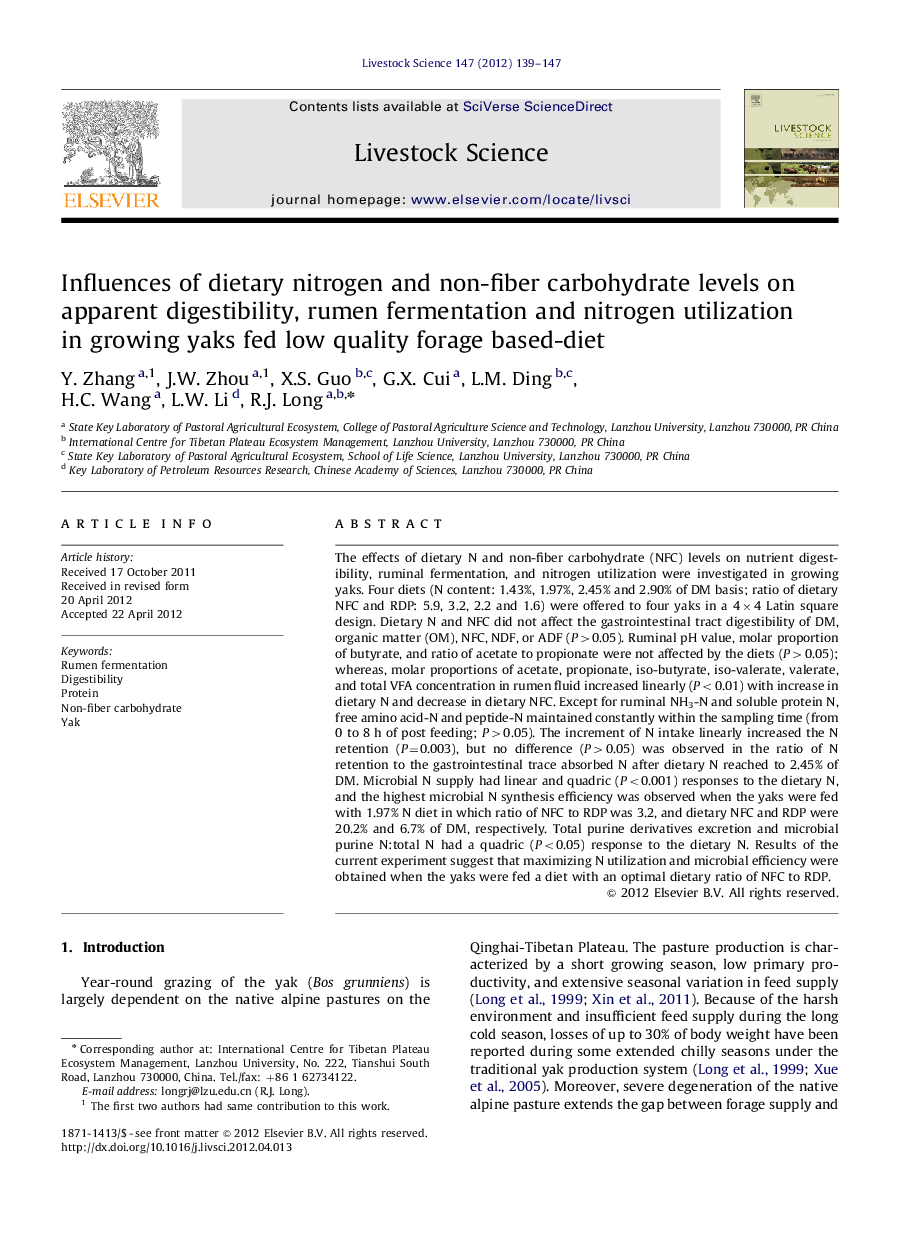| کد مقاله | کد نشریه | سال انتشار | مقاله انگلیسی | نسخه تمام متن |
|---|---|---|---|---|
| 5790543 | 1553985 | 2012 | 9 صفحه PDF | دانلود رایگان |

The effects of dietary N and non-fiber carbohydrate (NFC) levels on nutrient digestibility, ruminal fermentation, and nitrogen utilization were investigated in growing yaks. Four diets (N content: 1.43%, 1.97%, 2.45% and 2.90% of DM basis; ratio of dietary NFC and RDP: 5.9, 3.2, 2.2 and 1.6) were offered to four yaks in a 4Ã4 Latin square design. Dietary N and NFC did not affect the gastrointestinal tract digestibility of DM, organic matter (OM), NFC, NDF, or ADF (P>0.05). Ruminal pH value, molar proportion of butyrate, and ratio of acetate to propionate were not affected by the diets (P>0.05); whereas, molar proportions of acetate, propionate, iso-butyrate, iso-valerate, valerate, and total VFA concentration in rumen fluid increased linearly (P<0.01) with increase in dietary N and decrease in dietary NFC. Except for ruminal NH3-N and soluble protein N, free amino acid-N and peptide-N maintained constantly within the sampling time (from 0 to 8Â h of post feeding; P>0.05). The increment of N intake linearly increased the N retention (P=0.003), but no difference (P>0.05) was observed in the ratio of N retention to the gastrointestinal trace absorbed N after dietary N reached to 2.45% of DM. Microbial N supply had linear and quadric (P<0.001) responses to the dietary N, and the highest microbial N synthesis efficiency was observed when the yaks were fed with 1.97% N diet in which ratio of NFC to RDP was 3.2, and dietary NFC and RDP were 20.2% and 6.7% of DM, respectively. Total purine derivatives excretion and microbial purine N:total N had a quadric (P<0.05) response to the dietary N. Results of the current experiment suggest that maximizing N utilization and microbial efficiency were obtained when the yaks were fed a diet with an optimal dietary ratio of NFC to RDP.
Journal: Livestock Science - Volume 147, Issues 1â3, August 2012, Pages 139-147